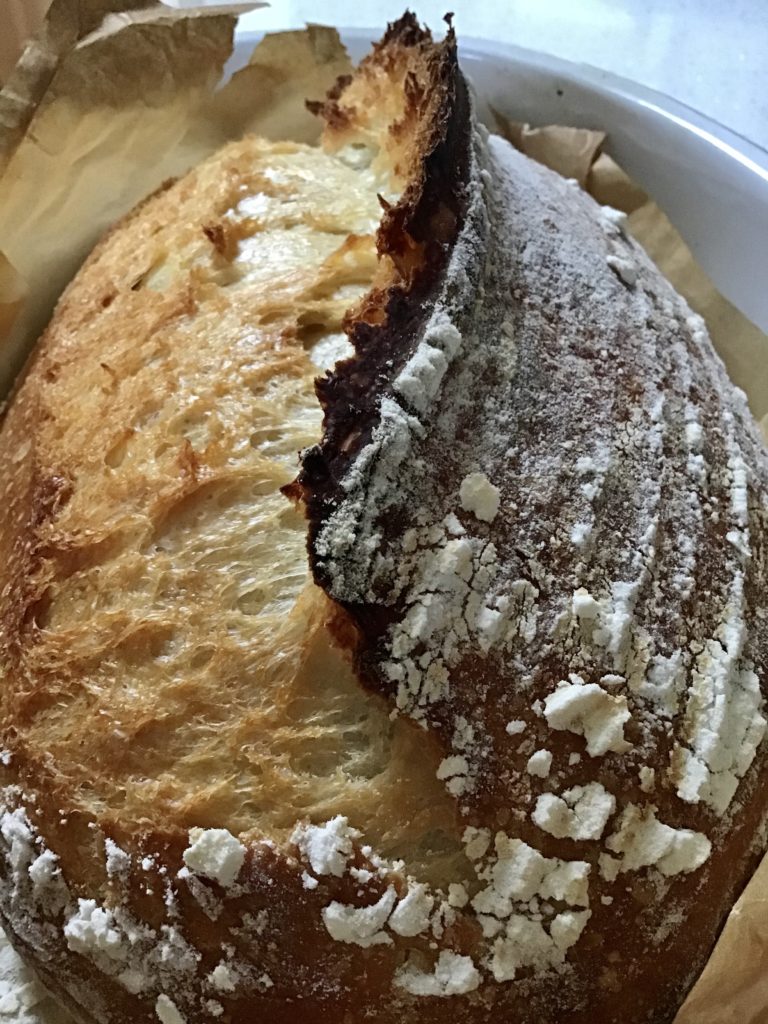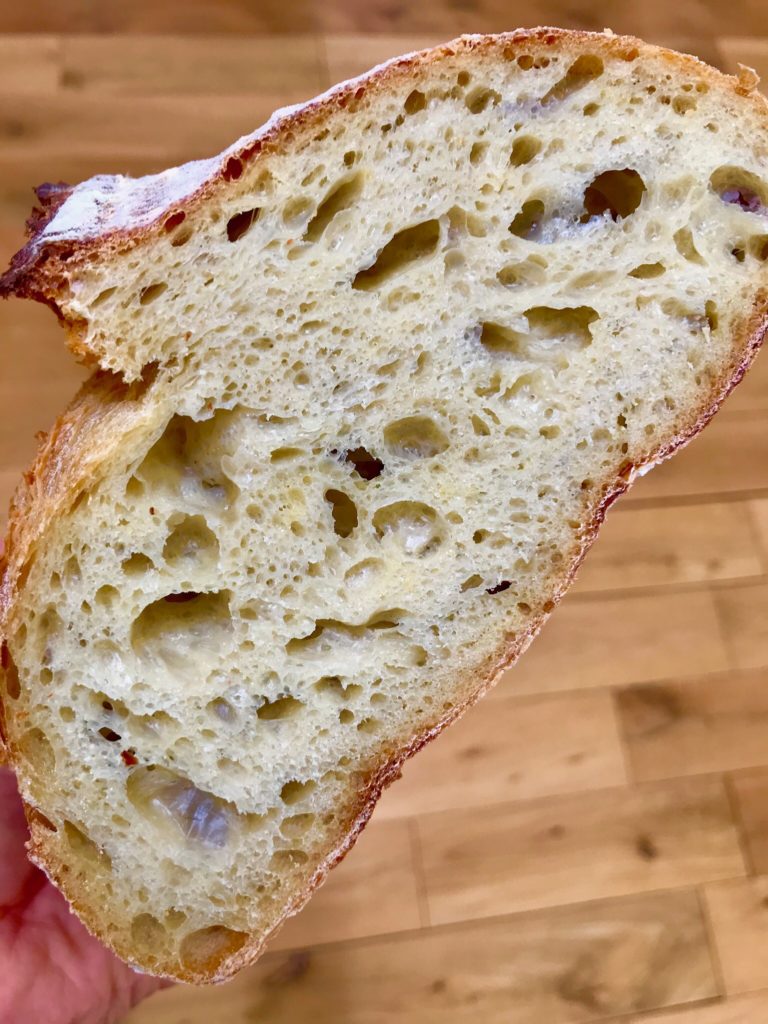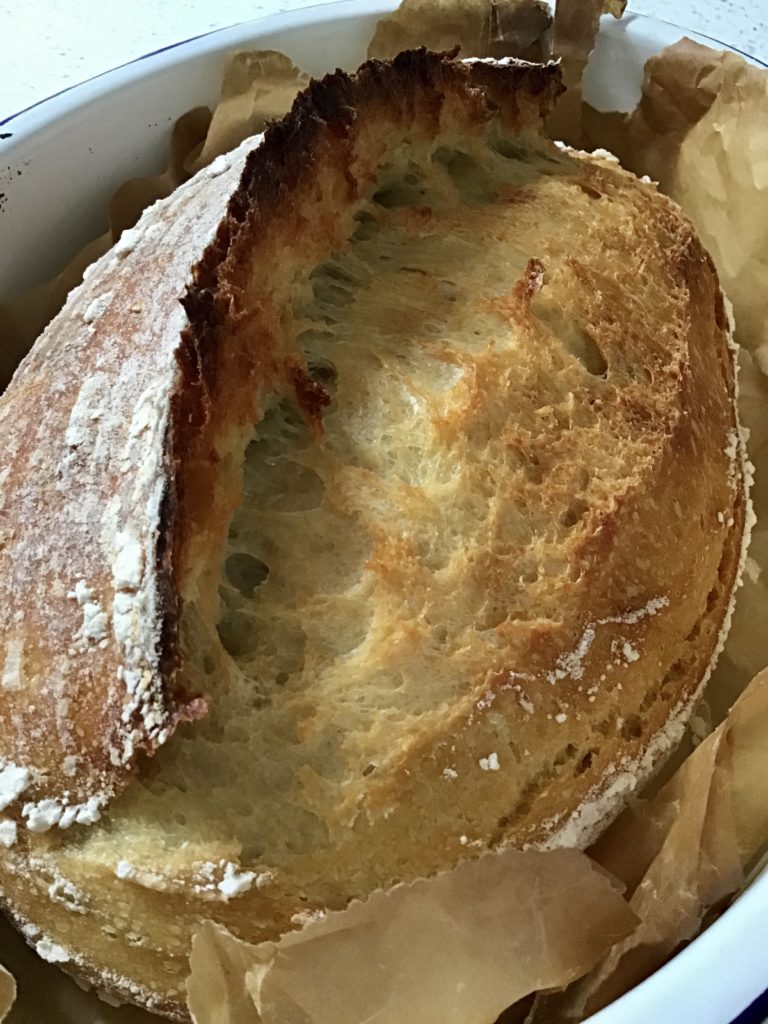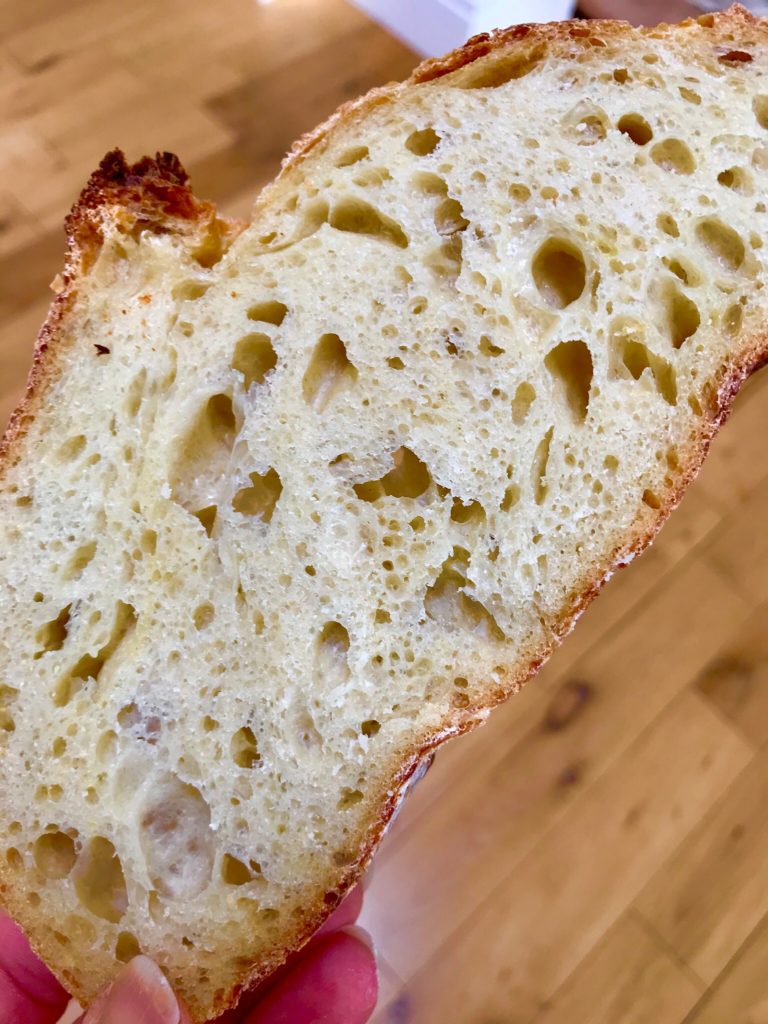
I was very lucky recently to be sent some bee pollen by one of my very kind Instagram followers. I’ve had bee pollen before, but not like this, this one is a vibrant yellow with lovely fat granules. Sourdough loves bee pollen, it loves the natural wild yeast and sugars that it brings to the party.
For this loaf I played with a new starter adding bee pollen to it from the beginning, and you’ll see from the photos in the grid below that it went a bit wild! It was very exciting to wake up to. Once I’d stirred it down and fed it again the next morning, it was still active and bubbly and ready to use within an hour.
This is what I used to make this loaf, however, you do NOT need to make a new starter yourself. If you would like to see how much starters like bee pollen, feed up your starter, split some out into a new bowl and feed it for a couple of days with your usual flour and water and a good amount of bee pollen before giving it a go. Or if you fancy making a new starter with some, then go for it! I didn’t measure out the bee pollen, I used a dessert sized spoon amount each time I added some.
To make my loaf, I used my master recipe, exactly as it is (link on the left of your screen) with this bee pollen boosted starter. You can also add the bee pollen to your dough instead.

For this loaf I used my 28cm long oval banneton and baked in my 30cm long oval pan from a cold start for 55 minutes. It’s all in my recipe 👍🏻

And this was inside the cut loaf. You can see the yellow tint from the bee pollen. Although bee pollen is sweet it does not make your loaf sweet using this small amount, but it does make the sourness more mild, and really produces a great texture, really fabulously chewy! It was a lovely loaf to eat.

If you do try it, I hope you like it!

